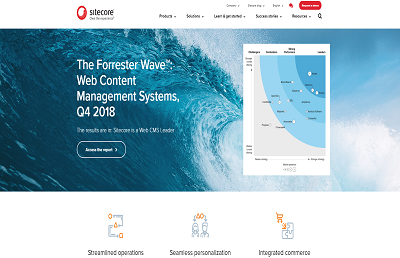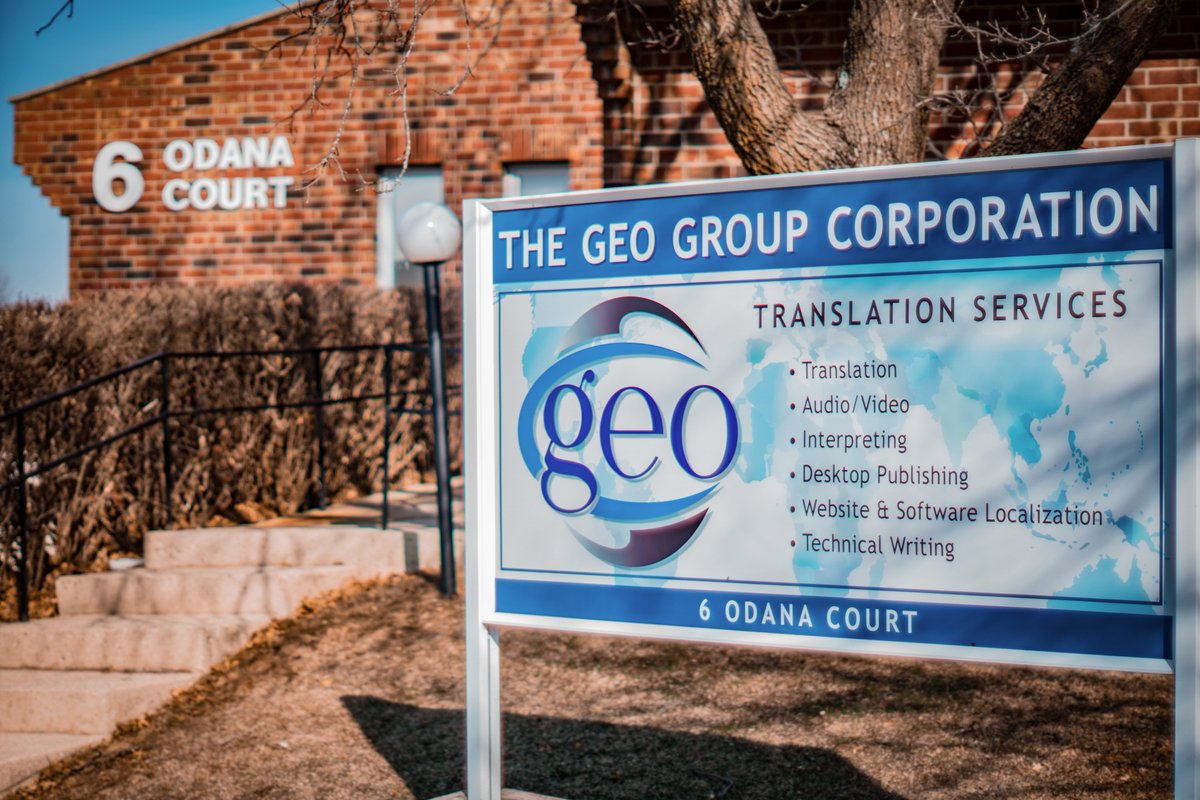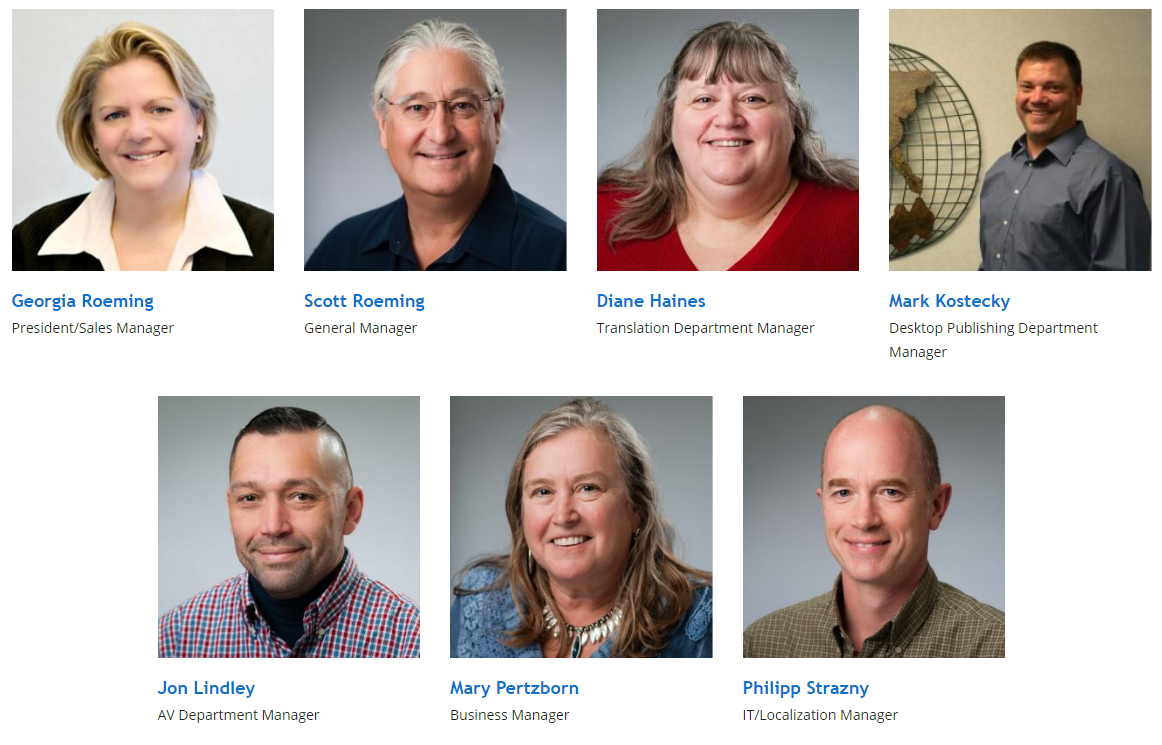This week, we are glad to present an interview with our translation partner The Geo Group, an American full-service translation agency.
How long has your service been translating?
Based in Madison, Wisconsin, The Geo Group Corporation was founded in 1991 as an advertising agency with extensive expertise in audio-video services. The company changed its focus to professional translation and interpreting services as a result of The North American Free Trade Agreement (NAFTA) passing in 1995, which increased the demand for translation in the United States.
Can you tell us about your staff and translators?
Currently, we have about 25 people working at the company. About half are sales and project managers, while the other half is production staff (desktop publishing, audio/video engineers, localizers) and administration. We have a very low staff turnover, on average, people stay with us for 13 years. One of the reasons is that we allow our staff to grow, develop and gain valuable experience, with that they can progress within the company.
“We work with 700+ translators who specialize in all kinds of different areas and languages.”
Since we have a quality management system certified to ISO 9001:2015, we have strict guidelines for hiring subcontractors. As with our staff, our contractors have worked with us for a long time, some of them for more than 20 years.
What is your area of expertise? Do you offer services to complement the website translation? (for example SEO, Social Media).
About 80% of our revenue comes from clients in manufacturing, assessment/training, and healthcare. Clients rarely ask for SEO, and if they do, it is typically restricted to providing translations for keywords and meta descriptions.
“The most important add-on services to website translation would be multilingual desktop publishing and audio/video translations. Almost every website contains downloadable documents that require normal document translation.”
This is where, our on-staff desktop publishers shine, because they can handle any DTP format . Likewise for audio or video clips: with two in-house studios, we can supply narrations as well as subtitled or fully voiced-over videos to our clients.
How often do you translate websites?
Web-related projects make up about 10% of our total business. This is a low estimate, though, because many document translation and A/V projects end up on the web. We also get many projects with text in Excel docs – typically, this is also text earmarked for web publication, but it may also be used for other purposes.
What kinds of WordPress websites do you translate most often? How is The Geo Group different from other translation services?
The WordPress websites we translate are public facing and informational, typical corporate sites. What makes us different is reliability and excellent customer service. For ours and our clients’ sake, we always create a quote that clearly shows what we are going to do, how long it will take, and what it will cost.
“We keep to our promises. Last year, we had a 99% on-time completion ratio.”
Overcharges are extremely rare. If this happens, it is usually due to changes in project scope that we do not have control over, and we always communicate with our client right away when anything unforeseen occurs. And when mistakes happen (everybody makes mistakes), we fix them asap and without any fuss. This is why we also have a very high client retention rate and referrals are our main source of new clients.
What 3 challenges do you find in WordPress websites?
That is a difficult question.
“Once we see that a client’s website is in WordPress, we know that things are relatively straightforward because we have a nice workflow setup – with WPML.”
The primary challenge for our clients is that they reinvent the wheel and come up with their own processes for exporting language assets and importing translations. I mentioned the Excel spreadsheets before. Some people even send us Word docs and then copy and paste. So, with WordPress sites in particular, we spend a lot of time with clients before they have ordered their first project.
We educate them and try to steer them away from copying and pasting or rolling their own import/export mechanisms. Just last week, a client wanted us to work in their admin GUI (not WordPress), and just coming up with a quote would have taken us several days of tedious labor. After explaining a better process to them and convincing them to involve their developers, they were able to send us export files that we could quote on within an hour.
How do you ensure that translations are accurate and match the tone of the website?
In the ideal case, we use 3 major quality steps:
- Editing (translation review by an independent translator); this is done in the translators’ preferred translation productivity tool.
- Client Review (translation review by a subject-matter expert): this is done in U-Proof, a proprietary web-based review tool that The Geo Group developed specifically for this purpose
Linguistic Review after integration to the website. - Editing and Client Review ensure that major linguistic issues are ironed out before the text is reintegrated on the web server. Obvious stylistic problems should also be taken care of at this point. Only then are translations reintegrated to the web server. At this time, translators can evaluate the text in its proper context and go through the whole site again to spot mistranslations or improper wordings that may only be visible in the full context.
Can you give some examples of recent WordPress translations that you completed successfully?
In 2018, most web content that we translated came from Sitecore.

Ready to send content for professional translation?
Are you interested in taking your translations to the next level by using a professional translation service?
It’s easy:
- Make sure to have WPML Translation Management and WPML String Translation activated in your site.
- In the WordPress admin, go to the WPML -> Translation Management page and click the Translation Services tab.
- Activate the translation service of your preference and authenticate it. For this, you will need to create an account on that service’s website.
- Go to the Translation Dashboard on the WPML -> Translation Management page and select content to send for translation. Add selected content to the Translation Basket.
- Finally, go to the Translation Basket tab, select to translate it using the selected translation service and send it for translation.
You can find the full instructions on the page about sending content for translation.





